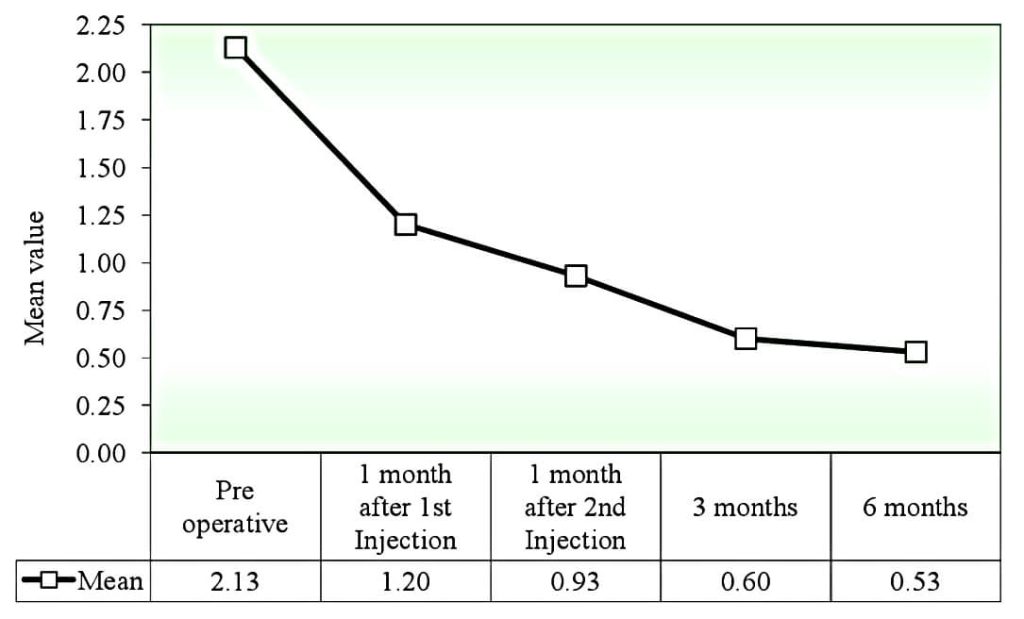What is the second most common chronic pain condition affecting the North American population (after back pain)? Temporomandibular joint dysfunction (TMJD).
TMJD causes pain, difficulty in chewing, clicking or popping sounds, and limited jaw movement.
TMJD pain affects around 12% of the population, with a staggering annual cost estimated at $4 billion. Up to two-thirds of those with TMJ disorders will seek treatment. Among these, approximately 15% go on to develop chronic temporomandibular joint dysfunction.
While there are various treatment options available for TMJD, platelet-rich plasma (PRP) injections have emerged as the most promising and effective therapy. This article aims to explore injections of PRP modified to contain high levels of fibrin (PRF) in the treatment of TMJD and shed light on its potential benefits.
Understanding Temporomandibular Joint Dysfunction
The temporomandibular joint (TMJ) connects the jawbone to the skull, allowing for smooth jaw movement during activities such as eating, speaking, and yawning. TMJD occurs when there is dysfunction or damage to this joint, often resulting from factors like jaw misalignment, teeth grinding or bruxism, stress, or trauma.
Traditional Treatment Approaches
Traditional treatment approaches for TMJD typically involve a costly combination of conservative methods such as pain medication, physical therapy, lifestyle modifications, and the use of oral appliances like splints or mouth guards. In more severe cases, surgical intervention may be required. However, these methods do not always provide long-lasting relief and may not address the underlying injury that caused TMJD.
Platelet-Rich Fibrin: Enhancing the delivery of PRP growth factors
PRP has been well documented to provide long lasting relief of temporomandibular joint dysfunction1. Now a modified form of PRP, called PRF (for platelet rich fibrin) has been shown to deliver an even higher concentration of tissue growth factors and bioactive proteins for tissue repair and regeneration2.
Why Ultrasound Guided PRP and PRF Injections for Temporomandibular Joint Dysfunction?
Ultrasound guided injections for TMJD provide proven accuracy and a predictable response to treatment. PRP harvesting is performed in a minimally invasive procedure. The process begins with the extraction of a small amount of the patient’s blood, which is then processed in our lab to separate and concentrate the platelets, fibrin and growth factors from other blood components. Then this concentrated PRP/PRF solution is expertly injected under ultrasound guidance directly into the affected TMJ area.
Summary of Benefits from Ultrasound Guided Prolotherapy Injection of the TMJ
1. Ultrasound Guidance Means Enhanced Results: The TMJ is a small but very complex joint. With ultrasound image guidance, precise injection provides a cost-effective alternative to MRI. or CT. In fact, a A study by Parra et al.2 compared CT vs. US-guided TMJ injections in children. Needle placement was shown to be acceptable in 91% of US-guided procedures (75% required no needle adjustment, 16% only minor adjustment) and unacceptable in 9%, which means the needle required major readjustment.

2. Injectable Platelet-Rich Fibrin (I-PRF) Enhances Tissue Healing: We have found that processing our platelets to platelet-enriched Fibrin (PRF) provides an enhanced delivery of the growth factors present in PRP and amplifies the natural healing process, promoting tissue repair and regeneration within the temporomandibular joint. This enables restoration of damaged cartilage and leads to reduced pain and inflammation3.
3. Reduced Inflammation Means a Healthier Joint : Both PRP and PRF injections have natural anti-inflammatory properties, which can help alleviate the inflammation associated with temporomandibular joint dysfunction. This can result in improved joint function and reduced discomfort.
4. Improved Joint Lubrication: Both PRP and PRF injections may enhance the production of synovial fluid, a natural lubricant for the TMJ. This can improve joint mobility and reduce friction between the joint components.
5. Long-lasting Effects: Unlike temporary pain relief methods, PRF injections aim to address the underlying causes of TMJD, potentially providing long-lasting benefits and reducing the need for repeated treatments. Our patients typically have results that last many years before repeat treatment is necessary.
Conclusion
Both PRP and Platelet-Rich Fibrin injections offer an effective non-surgical treatment option for patients suffering from temporomandibular joint dysfunction. By harnessing the body’s natural healing properties, PRP/PRF injections have the potential to improve tissue healing, restore cartilage, reduce inflammation, and enhance joint function. At Oregon Regenerative Medicine, we have seen consistent long-lasting relief for individuals living with TMJD, offering hope for a better quality of life.
Dr. Noel Peterson has practiced regenerative and orthopedic medicine in Lake Oswego, Oregon, since 1978. He is a Diplomate of The American Academy of Pain Management.
Sources
- Parra DA, Chan M, Krishnamurthy G, et al. Use and accuracy of US guidance for image-guided injections of the temporomandibular joints in children with arthritis. Pediatr Radiol. 2010;40(9):1498-1504. doi:10.1007/s00247-010-1581-2
- Kumar N, Francis M, Sindhu Vk S, Ramachandra V, Anilkumar PV, Fahad Khan M. Efficacy of Injectable Platelet-Rich Fibrin (I-PRF) in Managing Temporomandibular Joint Pain: A Prospective Clinical Study. Cureus. 2024;16(2):e54367. Published 2024 Feb 17. doi:10.7759/cureus.54367
- Hayashi T, Ito J, Koyama J, Yamada K. The accuracy of sonography for evaluation of internal derangement of the temporomandibular joint in asymptomatic elementary school children: comparison with MR and CT. AJNR Am J Neuroradiol. 2001;22(4):728-734.
- Murali, A., Sikkerimath, B. C., & Anshu, A. (2020). Ultrasound Guided Dextrose Prolotherapy: A Promising Hope for Temporomandibular Joint Dysfunction. Asian Journal of Dental Sciences, 3(1), 183–190.



